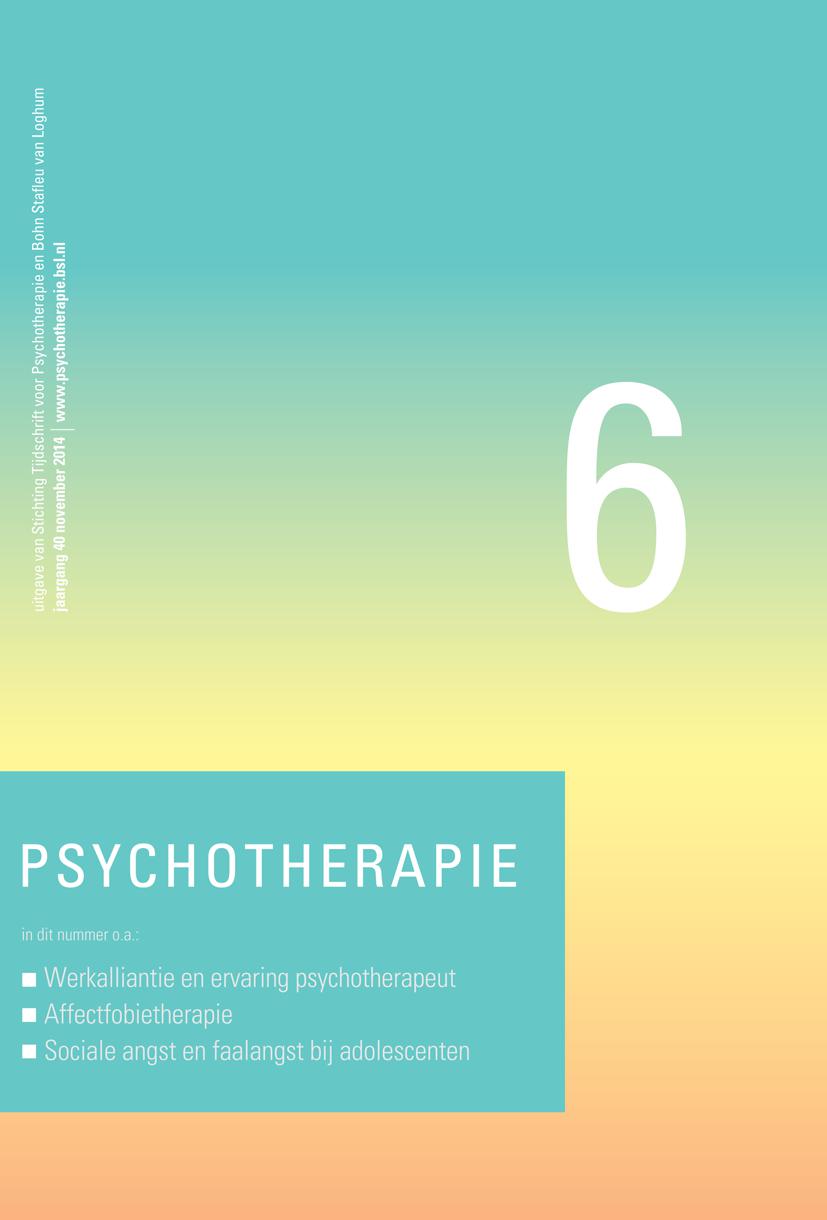Ellen Klaassens, Hester den Hartog Kees Kooiman
Ellen Klaassens, Hester den Hartog & Kees Kooiman
• Quality of working alliance, as reported by patients or therapists, is often associated with outcome in psychotherapy. Maybe not only the quality of the working alliance but other factors, such as the concordance between patient and therapist ratings of working alliance, may be important predictors of psychotherapy outcome. In this study we investigated both patient and therapist ratings of working alliance. In addition, we compared results between an experienced and a less experienced therapist and their patients. Working alliance was assessed with the Working Alliance Inventory (WAI). Average WAI scores, as rated by the patients, did not differ between groups. Level of concordance between patient and therapist differed on the WAI subscale BOND. Possible explanations are discussed. Future studies should focus on the contribution of specific therapist factors to the development of a good quality of working alliance.
Quin van Dam Marc Hamburger
Quin van Dam & Marc Hamburger
• In the Affect Phobia Therapy (APT), developed by McCullough, the central premise is that a psychodynamic conflict can be thought of as a fear of feelings or affect phobia. This allows therapists to treat the internal phobia as any standard (external) phobia would be treated with systematic desensitisation. The goal of APT is to experience and adaptively express previously avoided feelings. APT follows a treatment model which adheres to the fundamental structure of psychodynamic psychotherapy as outlined by Malan’s triangle of conflict and triangle of person. The main treatment objectives are a) restructuring of defences, b) restructuring of affect, and c) restructuring of self and other. After discussion and clinical illustration of these objects we describe the interventions and the indication of APT. We close by considering the efficiency of APT, the utility of the triangles and the clinical empirical research that supported the development of APT.
Esther Sportel
Esther Sportel
• Social and test anxiety are among the most frequent anxiety disorders. Both disorders can have serious short- and long-term consequences. Therefore it is important to identify adolescents at risk for these disorders early-on and intervene at an early stage. The current study focuses on both elements. Looking at risk factors we find that cross-sectionally behavioral inhibition, the fight-flight-freeze-system and attentional control are related to symptoms of anxiety and depression. Longitudinally this relationship has also been found. However, when controlling for pretest symptoms this relationship disappears, except for the predictive value of attentional control on symptoms of depression. These results indicate that over time earlier symptoms of anxiety and depression are the best predictors for later anxiety and depression, for depression attentional control has an additive value. Besides identifying risk factors, two interventions – cognitive behavioral group therapy (CBT) and cognitive bias modification (CBM), both aiming at reducing social and test anxiety – are compared to a non-intervention control group. CBT is effective in reducing test anxiety immediately after training and at six month follow-up. For CBM no significant effects on test anxiety are found. For reducing social anxiety CBT is found to be effective six months after training. CBM results in significant effect six months after training.

